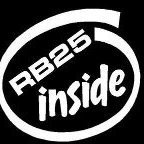Large Turbine + Tiny A/r Vs Small Turbine + Small A/r
Announcements
-
Similar Content
-
Latest Posts
-
By DraftySquash · Posted
Hi everyone, Apologies in advance if this feels like a topic covered multiple times. I'm only asking because some of the old topics I found are missing images now. I'm in the process of getting a manual boost controller (BC). Nothing fancy, just getting a manual one for now as I don't plan to go crazy with it and would not go over 10 PSI. My car is not jacked up on boost steroids to do crazy numbers. I want to understand the OEM setup of the boost solenoid and vacuum lines on the R34 GTT so I know what needs to be changed when I do install the BC. I sketched the current setup to the best I could see and it's on the diagram attached. If the boost controller 'Wastegate Arrow' goes from nipple 1 to 2. My understanding is that the red vacuum line's "F" connector-end should be connected to BC nipple #2? Nipple #1 is meant to have the "pressure source" so what vacuum line would that be? Is it the green vacuum line? From what I have read here, the OEM boost solenoid is not used at this point. So that can come out and then I can just plug the nipple that usually connects to the blue vacuum line? So would the final setup look something like this? Thanks in advance. I don't want to already be knee-deep into pulling out vacuum lines before understanding this. I'm a noob when it comes to boost setups so trying to learn as I go. -
Initial/early bite is a feature of.....generic pads. Things that work cold. Just put Bendix Ultimate in it. If you don't like them, it's only $3.50 wasted and an hour to change them. I've been using Intima SR, and they seem to be a good performance pad. Street friendly and able to take at least a little beating.
-
This is my first post after registering.. I hope i can find useful resources on this forum. Great forum.
-
As I implied in my post, I have NO idea what the were. But in case I didn't make it clear, the way they performed was brilliant; whatever the brand was. I think it was the compound that made the difference. And if they were Bendix, then sign me up, I want another set. I did drive down mount Ousley (just outside of the Gong) a few times, and they showed no untowards performance. Its not the low dust that I am looking for NOW. At the time I needed low dust, but now I have no issues with dust but want the initial/early bite of the pads that were used. Yeah, the early cold squeal may of been due to a missing shim or such. And to repeat, its not the low dust I am seeking, its the initial bite of the pads and increase in bite as the warmed up during each breaking. As soon as I let off, I don't remember the breaks being extra sticky if I used them again soon after. But I also did not test that theory. Thanks for the recommendation, But I would prefer to choose something specifically with the behaviour I described. I assume that they didn't use the default compound off the shelf, as we discussed the dust issue at length. And the early squeal when cold, I have seen the sound is more of an issue with some pad compounds. Mostly ceramic, which also are said to produce less dust.
-
Well, in 2007 he must have been charging about $1800 an hour. He only looked at the car for 5 minutes. And another 4 to write the report wrong, and another minute to correct it. Mind you, this was for a car that was: Stock engine, fmic (hole in drivers guard), all alloy intake and custom air box, 3 inch turbo back exhaust, lowered, and a set of 17" Advans (255/40/17 rear and 235/45/17 front). It was nothing crazy. The blue slipper wanted the "hole in the guard" engineered. But that was because he got the shits that I wouldn't "relocate the battery from the boot, back to the factory position in the engine bay"... In an R33 GTST... Also for emissions, E85, and don't go wild on timing. It's amazing how the closer you get ignition timing towards max torque, the last couple of degrees really throw NOx counts right up. And for the huge increase in emissions, it's only a small increase in torque.
-






Recommended Posts
Create an account or sign in to comment
You need to be a member in order to leave a comment
Create an account
Sign up for a new account in our community. It's easy!
Register a new accountSign in
Already have an account? Sign in here.
Sign In Now